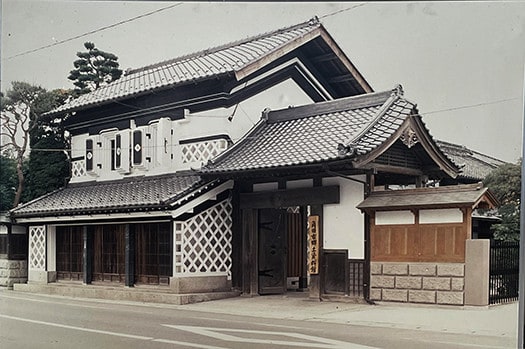


北海道の中央部の栗山町へは、その西端にある「小林酒造」側からは数回訪問していたのだけれど、今回たまたま、より南側から町中央部に向かったことで、まったく違った印象を持った。
わたしはこれまでの仕事経験で東北各地と縁が深まっていたのだけれど、そういう身体感覚経験からどうも宮城県南部地域との空気感の親和性を車窓から入ってくる景色に感じていた。こういう感覚はちょっと理知的に、科学的に説明出来る部分とは思えないのだけれど、強くあったと思うのだ。
きのうのブログでも「なつかしい」感じと書いたけれど、そのあとで徐々にこの栗山町の歴史を掘っていく内に、宮城県角田市とのつながりを知るに及んで、北海道的な「民俗」性のひとつの手掛かりかも知れないと思う気持ちが強まってきている。
実は別進行している案件に絡んで日本民俗学の祖・柳田國男さんの事跡を探究しているのだが、柳田さんも、また柳宗悦の「民藝運動」でも、北海道はほぼそういう意味での興味を深くは持たれないままに今日社会に至っている。しかし、日本の民の一部である北海道民は、遠く本州以南の故郷の土地を離れて開拓の鍬をこの地でふるってきた人びとの血脈であるのだ。
そして日本住宅の決定的な弱さである室内気候の安定性を比類なく向上させた実績をすでに獲得してきている。日本人の「生きる力」としての「民俗性」は正統に評価されて然るべきだと、個人的には思ってきている。・・・おっと、少し横道。
この栗山には明治期に対新政府との戦いに敗れた仙台藩の内、角田地域を領していた一統が北海道開拓に向かい、最初の地・室蘭からさらに奥地のこの栗山、当時はアノロ原野と呼ばれたこの地に移住して開墾してきた歴史を持っているのだという。上の写真と図は、一度訪問した記憶がある宮城県角田市の郷土記念館建築と、北海道の名付け親・松浦武四郎の探検図、そして現在のGoogleマップ。

どうもわたしの仕事の個人史的にも重なるので、いろいろと「とっかかり」がたくさんあって興味をそそられている次第。きのうの「ヤリキレナイ川」という数十年ぶりの再発見もあったので、なにか数寄の琴線を強く刺激されているようにも思える。
祖父以来のわたしの家系の北海道移住はこの栗山町の西北側隣の「栗沢町」で、それもいちばん岩見沢市に近い地域。わが家の視線としては、岩見沢からやがて札幌へと推移して行ったので、どちらかというと栗山町はもっとも縁遠くなってしまっていたのかも知れない。反省しつつ、謹んですこしづつ、掘ってみたいと思っている。
English version⬇
[Meiji pioneer settlement, from Kakuda in the Sendai clan to Kuriyama in Hokkaido.
My family lived in Kurisawa, the northwest neighbor of Kuriyama, and then headed for Sapporo, so my orientation was strongly in the opposite direction. I would like to reflect on this and follow in the footsteps of my predecessors. I would like to follow in the footsteps of my predecessors.
I had visited Kuriyama Town in central Hokkaido several times from the west end of the town, from the side of the Kobayashi Sake Brewery, but this time I happened to be heading toward the center of the town from a more southerly direction, which gave me a completely different impression.
My work experience has deepened my connection with the Tohoku region, and my physical sensory experience has led me to feel an affinity with the southern part of Miyagi Prefecture, as I looked out the car window at the scenery. I don't think this kind of feeling is something that can be explained scientifically, but I think it was strong.
As I wrote in yesterday's blog about the “nostalgic” feeling, as I gradually dug into the history of Kuriyama, I came to know about its connection with Kakuda City in Miyagi Prefecture, and I began to feel that it might be a clue to the “folk” character of Hokkaido.
In fact, I have been exploring the history of Kunio Yanagida, the founder of Japanese folklore, in connection with another ongoing project, but neither Mr. Yanagida nor Muneyoshi Yanagi's “Mingei Movement” have been deeply interested in Hokkaido in that sense, until now. However, the people of Hokkaido, who are part of the Japanese people, are descended from people who left their homelands far south of Honshu and wielded the plow of pioneering in this land.
And they have already achieved an unparalleled improvement in the stability of the indoor climate, a critical weakness of Japanese housing. Personally, I have come to believe that “folklore” as the “power of life” of the Japanese people should be legitimately evaluated. Oops, a little digression.
Kuriyama is said to have a history of cultivation by a line of the Sendai clan that was defeated in a battle against the new government in the Meiji period (1868-1912), and which had taken possession of the Kakuda area, and moved from Muroran, their first settlement, to Kuriyama, then known as the Anoro Plains. The photos and diagrams above show the architecture of the local memorial museum in Kakuda City, Miyagi Prefecture, which I remember visiting once, the exploration map of Takeshiro Matsuura, the godfather of Hokkaido, and the current Google map.
I am intrigued by the many “triggers” for my interest, as they overlap with the personal history of my own work. Yesterday, I rediscovered the “Yarikirenai River” for the first time in several decades, so it seems to me that I am being strongly stimulated by a few old heartstrings.
My family's first immigration to Hokkaido since my grandfather was to Kurisawa-cho, the northwestern neighbor of Kuriyama-cho, and the area closest to Iwamizawa City. My family's sightline has shifted from Iwamizawa to Sapporo, so Kuriyama-cho may have been the furthest away from my family's heart. With regret, I would like to dig a little deeper.

















